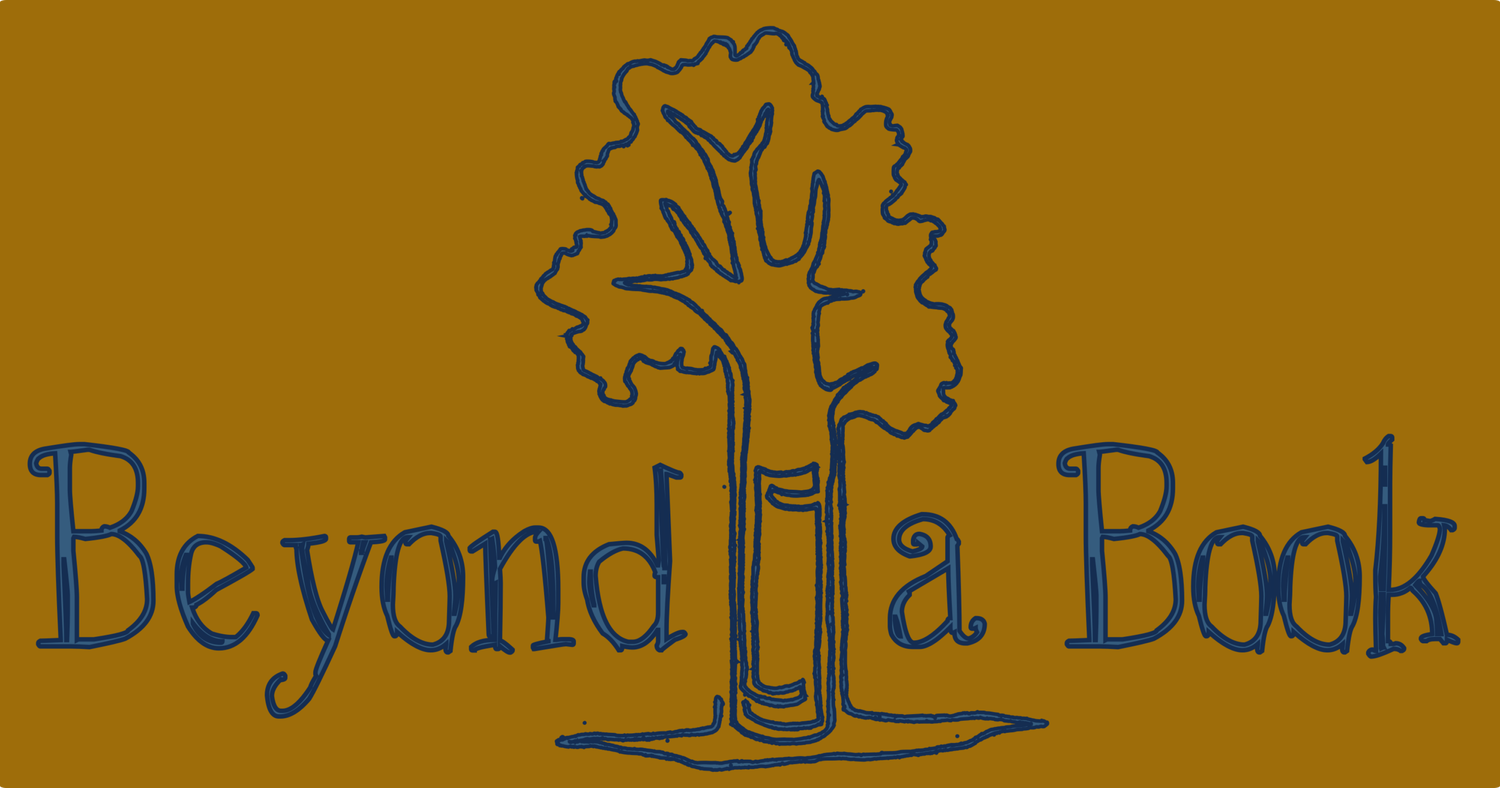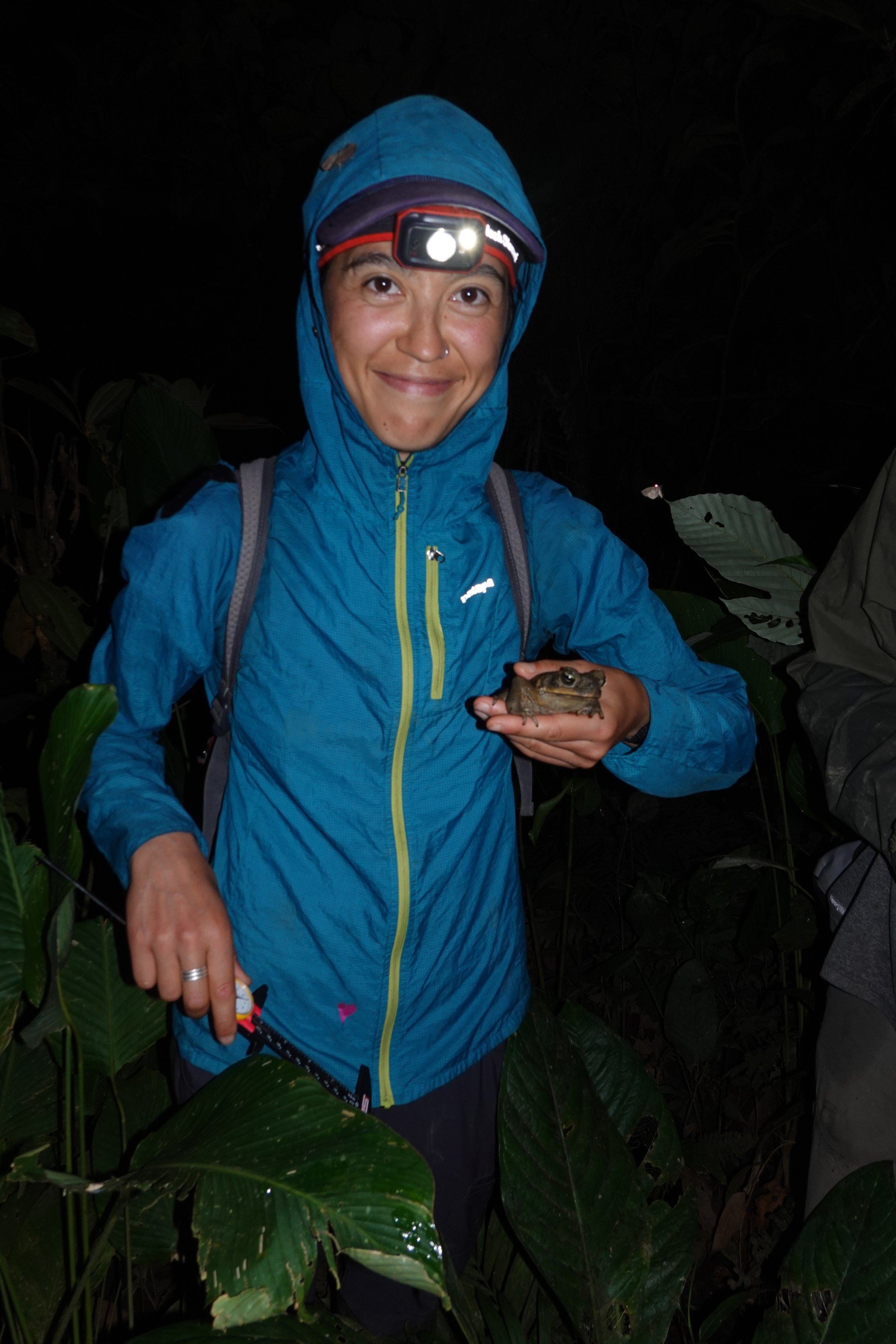by Kira Miller
-Shing! Shing! Shing!- Sara, Eli, and I stood in a single-file line behind our guide, Nenquerei, who was swinging his machete as he led us into the forest. Conflicting feelings stirred inside me each afternoon as we made camp in the jungle. Paths, like this one, were needed just to walk through the dense forest, as were patches for camp. I always felt a twinge of guilt as Nenquerei cleared a spot for our gear, our “kitchen,” and oursleeping area. After being used to the LNT (Leave No Trace), minimal-impact style of camping we did in the Sierra Nevada backcountry, these massive camps we created felt intrusive and extravagant. Excited as we were to explore the forest in search of frogs each night, we recognized that because we were there, plants were indiscriminately getting slashed down. Our presence was changing the environment right before our eyes. Listening to each ‘shing!’’ felt like listening to the whimpers of each plant as they were trimmed back.
Nenquerei was a pro with a machete. One afternoon he fashioned us canoe paddles out of some driftwood.
It can be easy to forget that people are cutting down trees in places like the Amazon when you aren’t there to bear witness. It can also be easy to forget that I am still connected to that destruction, although I may not (always) be the one blazing trails or harvesting bananas with a machete. My mere existence on this planet links my life to those of the lost trees…drinking soy milk and filling up my van with gasoline means that the jungle was likely destroyed somewhere. Chopping down a narrow trail of brush didn’t seem as large-scale devastating as the hundreds of acres that oil companies were bulldozing…but it was enough to remind us that our choices had consequences.
Was celebrating frogs and sharing their stories enough to justify our trailblazing, camp-making disturbance? Whatever the answer, we owed it to the plants to acknowledge their story too. “Thank you,” we whispered to the plants as we set up that evening’s shelter.
The plants of the jungle were as worthy as the frogs.
Our Waorani guides knew the jungle and the river better than we could even fathom. As our journey took us down the Rio Curaray, our guides pointed out trees, vines, toucans, and turtles, and sang out both their Spanish and Waorani names. To our untrained eyes, the river’s curves blended into uniformity. It felt like we were drifting through a perpetual Microsoft screensaver - not in a boring way, but in a way that felt like we had seen each riverbend before. Yet many nights, our camp spots were determined by our guides’ local knowledge. They would stop us at a seemingly random place, point out an overgrown trail, and lead us straight to a lake hidden in the thick of the jungle.“How did they know this pond was here?!” Sara would exclaim. They knew which bends in the river would lead to other Waorani communities, which banks hosted wild jungle, and which parcels of land were plantain or yucca farms. I always hope to know a landscape that well.
Gonzalo lead us through thick jungle to an oxbow lake full of fish.
The first step to knowing the land is noticing the land. Our guides were well-practiced at noticing. “Tortuga!” I heard Nenquerei say as he pointed to a log far ahead. It took me a minute to see what he was seeing; his eyes were much quicker at distinguishing the outstanding gray lump from the rest of the downed tree. I barely registered the turtle before seeing its splash as it dove head-first into the turbid current. Even when we were being our most silent, listening contently to the songs of birds and the soft gurgles of the river, those basking turtles recognized our presence as soon as they heard the ripples made as our boat nudged the creeping current along.
Our guides were also very good at pointing out bats roosting on driftwood in the middle of the river.
Our momentum ebbed and flowed with the river as we continued downstream. Some nights were frogful and others, not so much. Regardless of any particular evening’s frog count, our search and our trip was being realized more and more. We ended most nights in clothes damp with sweat and boots caked in mud. Frog slime, pond water, bug bites, and all: we hooted with triumph as Eli launched himself after an escaping tree frog, crashed down in a trap of twisted roots and mud, and stood up victoriously with the beautiful creature in his hand. “We are living any ten-year old’s dream,” Sara reminded us.
That child-like energy was contagious. We may have started by simply sharing a canoe and our camp with our guides, but our giddiness over frogs spilled over onto them. Each morning we would show them photos of frogs found the night before and their eyes would widen, astonished that such creatures shared their forest. They chatted quickly amongst themselves in their own language and then asked us to see more. Soon, they were flipping through our laminated field guide pages with curiosity, marveling at the diversity and pointing out any frogs that caught their interest. They recognized some of them already, and with eager eyes began noticing more frogs on their own. Before long, we were all listening to (and mimicking) frog calls together around camp.
We studied field guides while we waited out the rain.
Usually our guides went to bed with the sun but sometimes Nenquerei joined us, forging our trail and making sure we weren’t entirely lost. A patient and stealthy leader, we often forgot he was there until he found a frog. “Encontro!” we would hear from several steps ahead. We turned to see his dimming headlight shine back towards us as he announced his find. Busy with our own frogs, we would hurry…slowly…to take photos, jot down notes, and return the frog to their home before we stumbled ahead to meet Nenquerei and his frog. We were all part of this huge positive feedback loop: get excited → look for frogs → find frogs → get excited. We oooh-ed and ahhh-ed over each frog we found together, staring with grinning eyes at their wild colors, sizes, and shapes.
Nenquerei would gently holler to us whenever he found a frog.
The more we looked, the better we got at seeing. Not just the details and nuances of each frog (though this improved too), but all the jungle’s secrets waiting to be discovered. By looking for frogs, we noticed other beings: wild looking stick bugs, leaf bugs, tarantulas, snakes, lizards, crickets, beetles, beetles with GLOWING ‘eyes,’ moths, butterflies, ants, spiders, scorpions, slugs, snails…there were leaves large enough to envelope me in the fetal position, vines that draped down like elegant curtains, and flowers that appeared delicate and resilient. By slowing down and scouring the leaf litter and tangled branches that surrounded us, hoping to find more frogs, we were slowing down and noticing every other living being around us, too.
Wow! Need I say more?
And there was life in every corner. One creature showed us another. Stopping to chase a frog who had hopped out of sight, we were led to at least two more. We saw mosquito and other larvae as we watched tadpoles swirling around in shallow puddles, and we saw ants marching in a line as we carefully combed through small piles of leaves. We found snakes searching for frog meals, and frogs searching for moth meals. We watched spiders spin webs around their midnight snacks, and spotted camouflaged lizards sleeping precariously on draping leaves.
We fell in love with blunt head snakes, who roam the forest looking for frogs.
Every creature we noticed was required here. Every creature belonged. Even us visitors belonged. We couldn’t escape the connectedness of this space if we tried. These chance encounters were just as interesting and important to us as the frogs we found: butterflies with psychedelic-patterned wings, snails with shells larger than both my fists combined, shielded praying mantises, and leaf-bugs that appeared identical to the surrounding leaf litter… Each creature was amazing. Each creature held its own story, and the story written in conjunction with their cohabitants.
For this brief segment of time, all of our stories intertwined. Our Waorani families, our friendships, these frogs, those trees…the vast jungle, the river, the birds and insects, bats and monkeys…all our stories met. Here.
Thanks to frogs our paths crossed with Pigemo and his family.
That’s kind of the crazy thing, right? The beings and places who may have otherwise never crossed paths were all united on this two-week river trip, all because we wanted to see frogs. It was special to be there in that jungle at that time: with our Waorani families, with the frogs, and with each other. It often felt unbelievable – we had somehow pulled this off? – and yet, because so many moments had to happen in order for us to be there…it was believable. The culmination of our choices, chance, and pure adoration of frogs willed this trip into being. Everything was connected.
And what is the perfect creature to bring attention to such interconnectedness? A frog. Bridging water and land, moisture and air, a frog’s life naturally reminds us that all things are connected. Their sensitivity to water pollutants reminds us that our actions directly impact the health of their (and our) habitat. Their beauty and mystery connects and brings people together through conservation research and pure reverence. Their diverse colors and behavior remind us that although we may have various tactics for living, we are all just trying to survive. If we could remember - even for one minute each day - the depth of our connection with each other, each creature, each tree, each landscape, each molecule on this planet…imagine how powerfully our actions could be steeped in awareness and gratitude.
The webs we can draw between us are endless. Our web starts with a frog.










